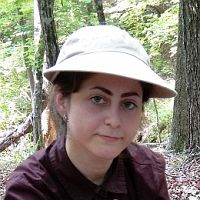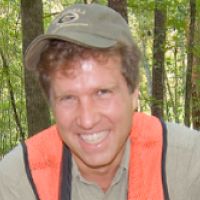Foroughi et al., 2017
Soil phosphorus distributions in the Calhoun CZO landscape
Foroughi, Maryam, Lori Sutter, and Daniel Markewitz (2017)
Soil Science Society of America 2017 Annual Meeting
-
Calhoun, GRAD STUDENT
-
Calhoun, STAFF
-
Calhoun, INVESTIGATOR
Abstract
The Calhoun Experimental Forest in the Piedmont of South Carolina has a history of forest clearing for agriculture, severe surface soil erosion, agricultural abandonment, and reforestation. This combination makes Calhoun a unique place to consider the landscape scale redistribution of P. The spatial distribution and chemical state (e.g., organic or inorganic) of soil Phosphorus (P) are critical processing governing ecosystem structure and function. Over decades, slow cycling of organic and occluded P fractions can contribute to soil P availability. The objective of this research is to measure P pools in different landscape positions of small watersheds and evaluating the redistribution and current cycling of P. Soil samples were collected from upper, mid, and lower landscape positions at three reforested and three reference sites. All the soil samples were extracted with Mehlich III and Hedley fractionation methods. In addition, water samples were collected monthly from local streams and river to assess how much P is moving in surface waters. Preliminary results of the soil samples showed P availability in reforested watersheds in upslope positions are higher than reference sites (8.02 vs. 4.89 mg/kg, respectively). P availability decreased with increasing depth of the soil profile; although increasing P in the depth of 150-200 (cm) in low-slope positions was also observed. Hedley fractionations found a higher ratio of slowly labile organic P to slowly label inorganic P in reforested watersheds than reference sites in upslope soil profiles. Stream water samples presented the highest concentrations of P in big rivers such as the Enoree river (> 7.5 MmolL-1); the lowest concentration was shown in the first order streams (< 0.07 MmolL-1). Collectively, the results suggest that P applied or accumulated during previous agriculture has moved within the soil profile and across the landscape over time due to erosion, leaching, and surface water discharge.
Citation
Foroughi, Maryam, Lori Sutter, and Daniel Markewitz (2017): Soil phosphorus distributions in the Calhoun CZO landscape. Soil Science Society of America 2017 Annual Meeting.
 This Paper/Book acknowledges NSF CZO grant support.
This Paper/Book acknowledges NSF CZO grant support.
Explore Further



